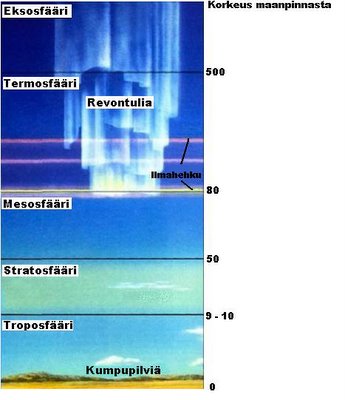93 miles high in Finnish
 Troposphere,
Troposphere,Stratosphere,
Mesosphere,
Thermosphere,
Exosphere.
Exosphere,
Thermosphere,
Mesosphere,
Stratosphere,
Troposphere.
After spending nearly seven years in space and traveling more than 4.6 billion kilometers, NASA's Stardust spacecraft returns to Earth's atmosphere January 15, 2006, to release a capsule that will parachute to the ground, carrying precious samples of cometary and interstellar dust. Scientists believe the cargo will help answer basic questions about comets and the origins of the solar system. "Comets are some of the most informative occupants of the solar system," said Mary Cleave, associate administrator for NASA's Science Mission Directorate. "The more we can learn from science exploration missions like Stardust," she added, "the more we can prepare for human exploration to the moon, Mars and beyond." Stardust is the first spacecraft with the ability to retrieve samples obtained in deep space and return them to Earth for research.
The $168.4 million mission (not including the Delta 7426 launch vehicle) was launched from Cape Canaveral Air Force Station in Florida in February 1999. Stardust has circled the sun three times in nearly seven years.
"Our mission is called Stardust in part because we believe some of the particles in the comet will be older than the sun and planets that formed around other stars," said Stardust principle investigator Don Brownlee at a December 21 NASA briefing. "We call them stardust."
200+ million for some space dust? I'll have what they're having.

0 Comments:
Post a Comment
<< Home